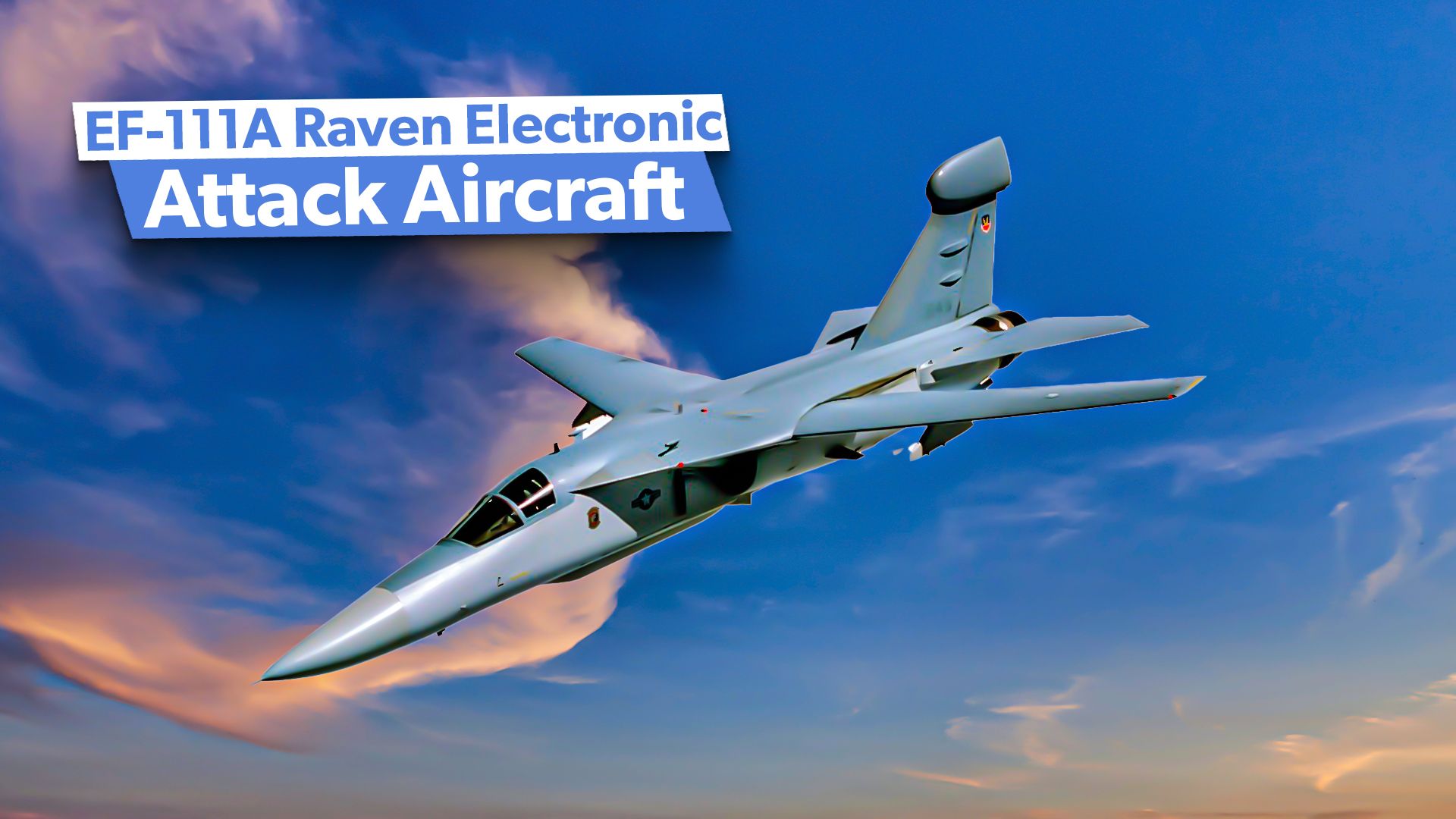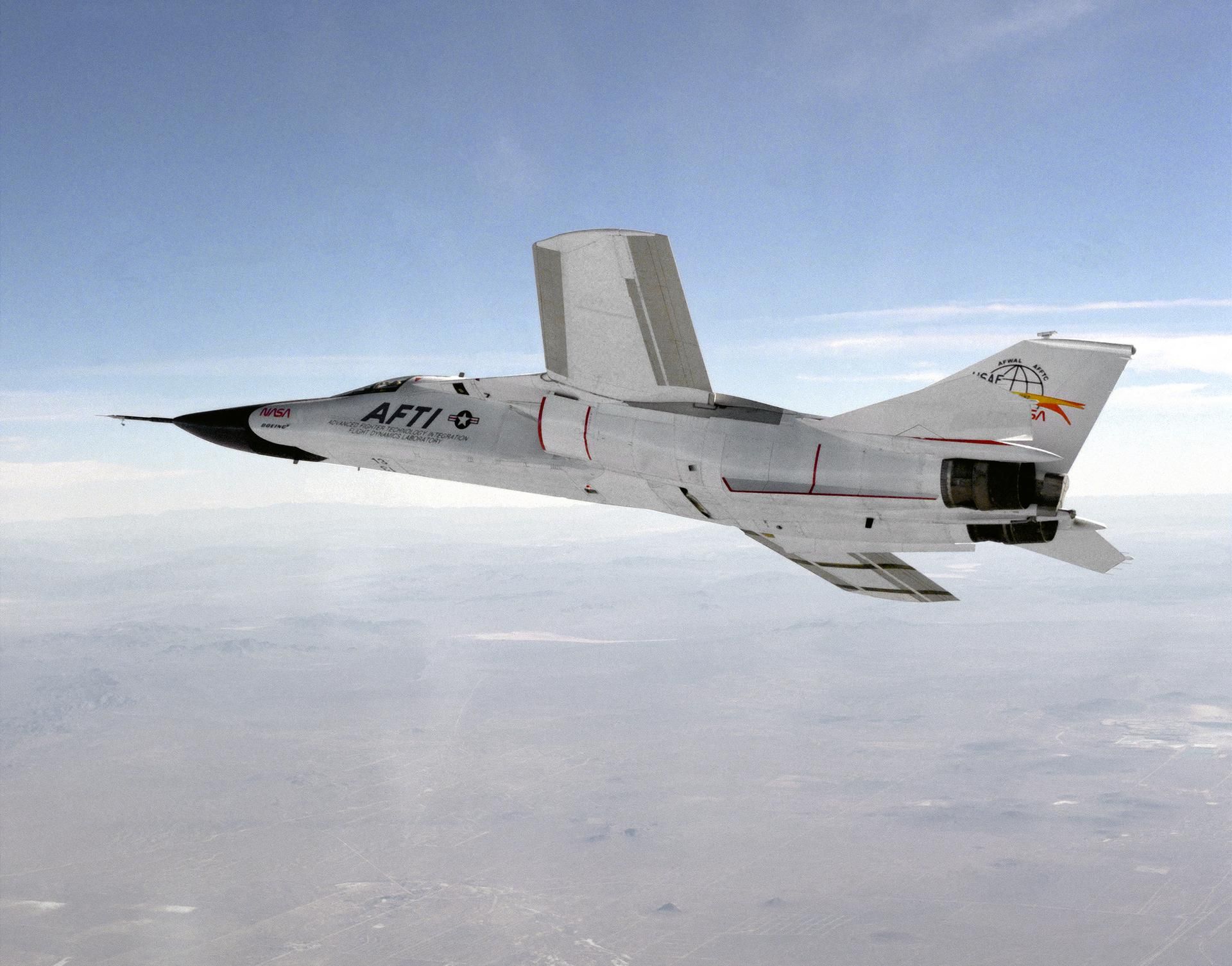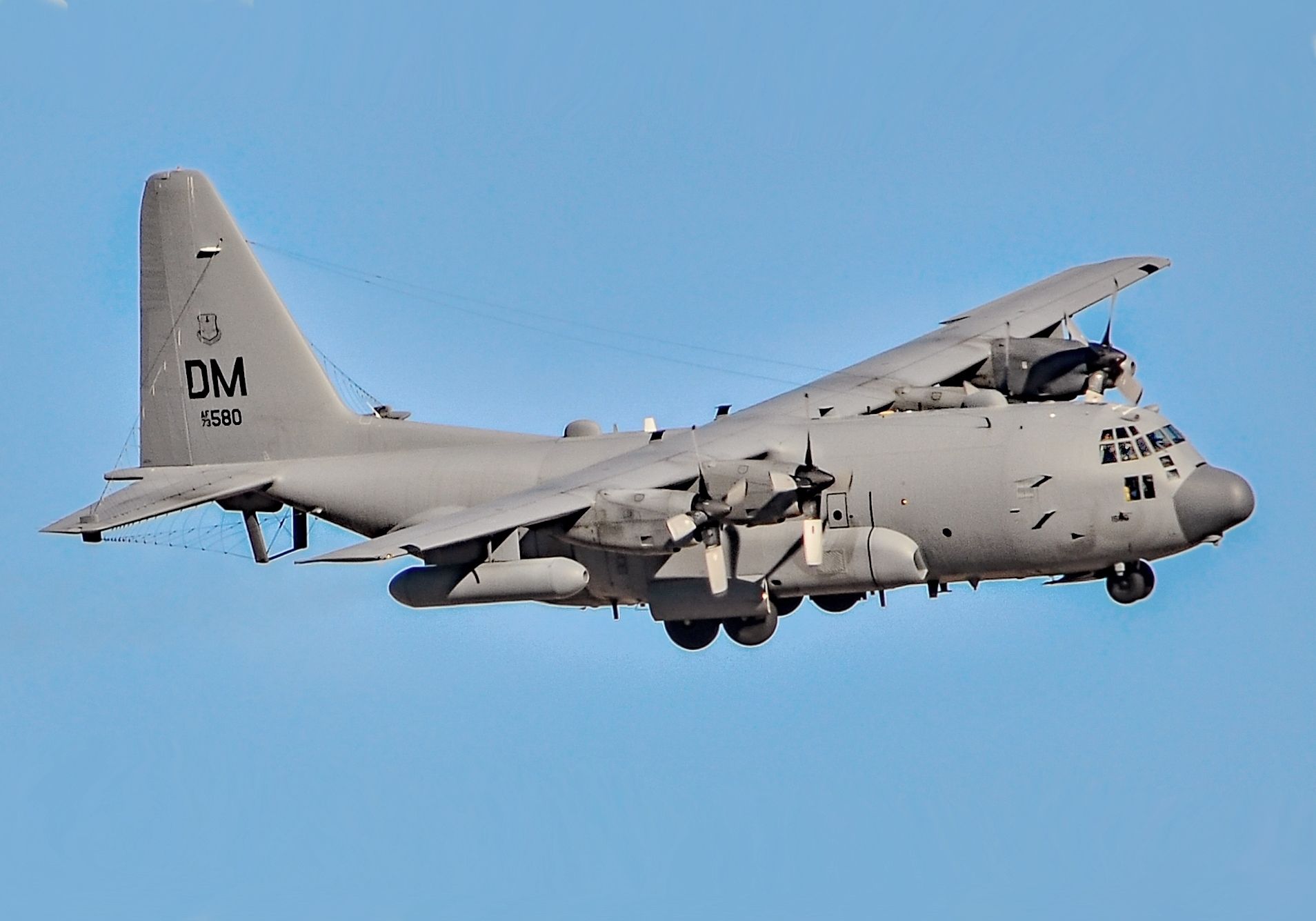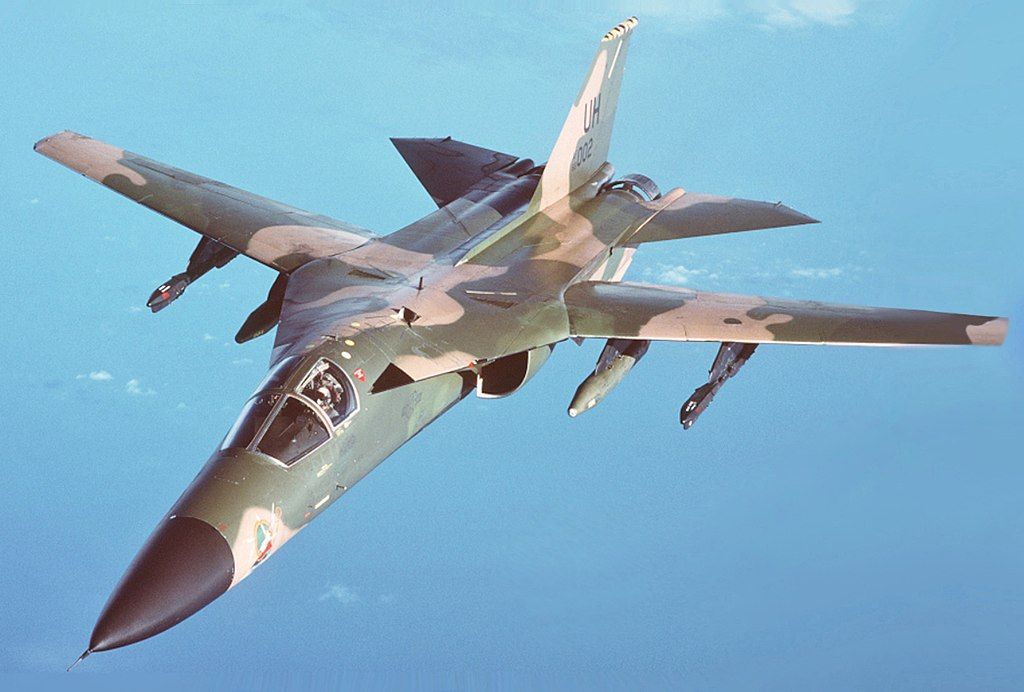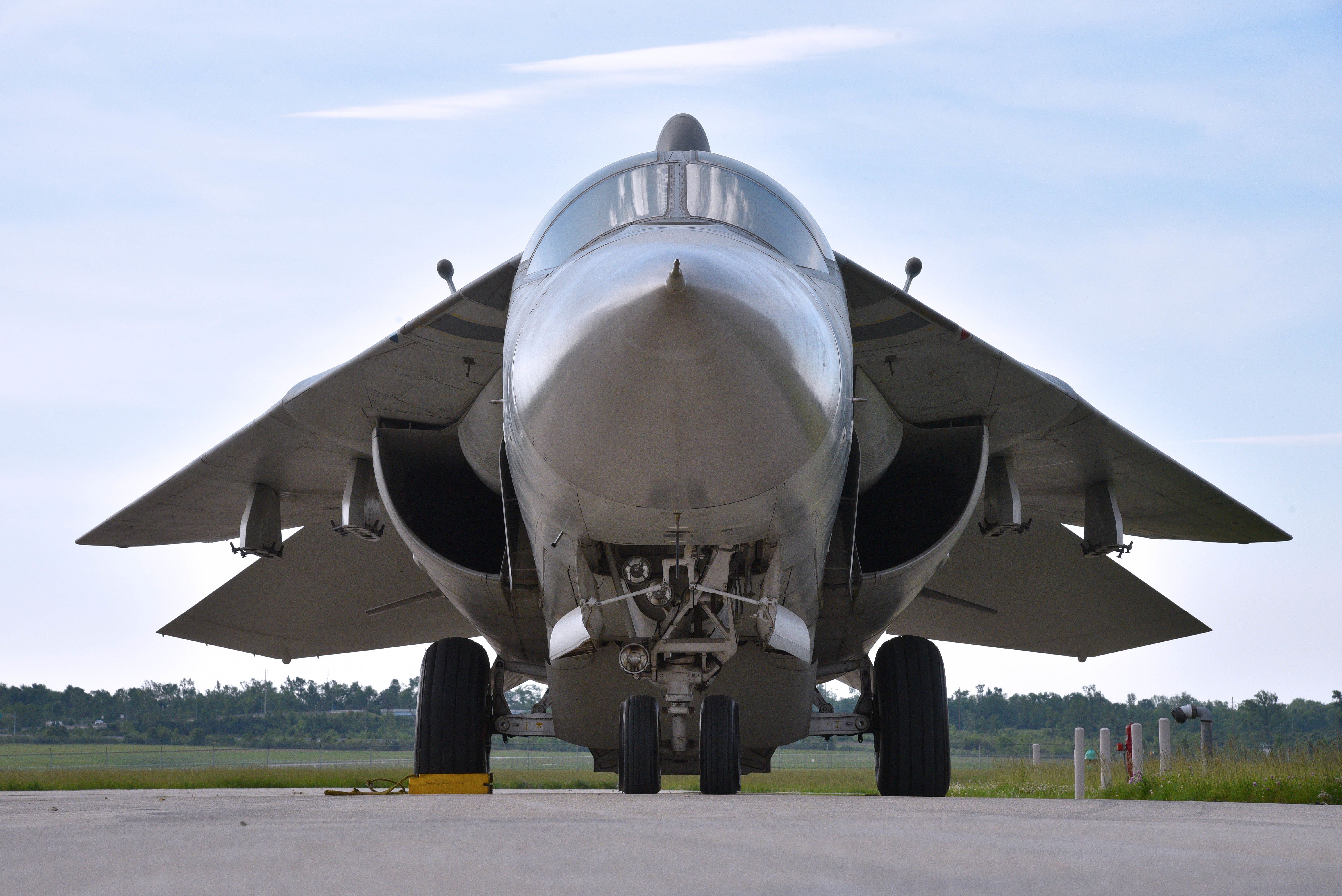The
F-111 Aardvark was a loved sweep-wing American fighter bomber of the late Cold War
(and was loved by the Australian Air Force). However, dozens were also specially converted for use as dedicated Electronic Warfare (EW) fighter jets
. These carried no missiles and were a valuable tool for the United States Air Force
to Suppress Enemy Air Defenses (SEAD).
1
Developed from F-111 Aardvark
42 EF-111A Ravens were built
|
Number of F-111s built: |
Total 563 (42 Ravens) |
|---|---|
|
Operators: |
US Air Force, Australian Air Force |
|
Retired: |
1996 US Air Force, 2010 Australian Air Force |
As the EF-111A Raven’s name suggests, it was developed from the F-111 Aardvark swept-wing fighter bomber. 42 Ravens were built, with the first coming into service in 1983 and the type being retired in 1998. It was introduced to replace the aging Air Force EB-66 Destroyer and was chosen over the existing Navy EA-6B Prowler partly due to its greater speed.
Photo : NASA
The F-111 Aardvark was able to conduct a number of roles (like attack, strategic bombing, recon, and more) and was also operated by the Royal Australian Air Force. The last US Air Force F-111s were retired in 1996 and replaced by F-15E Strike Eagles. The
Soviet Su-24 Fencer was partly a copy of the F-111
, and it remains in service in the Ukrainian and Russian air forces.
2
Retired without replacement
The Air Force lacks a fighter EW jet similar to the Raven
|
Air Force jamming aircraft: |
F-16CJs, EC-130H Compass Call (being replaced by EA-37B) |
|---|---|
|
Navy jamming aircraft: |
EA-18G Growler |
|
Marine jamming aircraft: |
None but considering Kratos XQ-58 Valkyrie drone (Grumman EA-6B Prowler retired) |
The General Dynamics EF-111A was retired without a fighter jet EW replacement in the Air Force
.
Air Force EW operations have been carried out by the EC-130H Compass Call aircraft
(now being replaced by the Guflstream-based EA-37B aircraft). The Navy, on the other hand, maintains a dedicated fighter jet-based EW aircraft – the EA-18G Growler.
That said, the Air Force does still have some EW capabilities with its F-16CMs. There are packages offered by Northrop Grumman to make the F-16 an EW platform. Northrop Grumman states, “The AN/ALQ-257 Integrated Viper Electronic Warfare Suite (IVEWS) is designed to give F-16 electronic warfare (EW) capabilities on a par with fifth-generation aircraft, significantly enhancing survivability for operations in contested and congested electromagnetic spectrum environments.”
3
Role taken by missile
HARM missiles are carried by F-16CMs
|
Length: |
13 feet, 8 inches |
|---|---|
|
Aircraft compatible: |
Only F-16CM in US Air Force (Soviet-era Ukraine jets jerry rigged to carry them) |
|
Date deployed: |
1984 |
According to FlightGlobal, Raven’s role was not taken over by an aircraft but rather by a missile—specifically Raytheon’s radar-seeking AGM-88 High-Speed Anti-Radiation Missile (HARM). This missile is typically paired with the F-16CM (although some have been donated to Ukraine, where they have been used to destroy Russian radars).
The Air Force states, “The AGM-88 can detect, attack, and destroy a target with minimum aircrew input. The proportional guidance system that hones in on enemy radar emissions has a fixed antenna and seeker head in the missile nose. A smokeless, solid-propellant, dual-thrust rocket motor propels the missile. The F-16C is the only aircraft in the Air Force current inventory to use the AGM-88.“
4
The Raven was unarmed
Mach 2.2 was the Raven’s main defense
|
Armament: |
None |
|---|---|
|
Speed: |
Mach 2.2 |
|
Powerplant: |
2 × Pratt & Whitney TF30-P-3 (later upgraded to TF30-P-9 turbofans with afterburners) |
All of the space on the EF-111 Raven was crammed with complex electronic warfare gear meaning the aircraft was unarmed. Besides being protected by other fighter jets, its main self-defense was its speed and acceleration. This is unlikely to be very practical today as no aircraft are able to outrun missiles. This is partly why F-35s are slower (Mach 1.6) and run on the idea that “you can’t run, but you can hide.”
Unlike the F-16CMs used today, it wasn’t capable of firing anti-radiation missiles (this was something of a tactical limitation). The Navy’s Boeing EA-18G Growler can also carry some weapons for self-defense (including the AIM-120 AMRAAM missiles).
5
Only F-111 to achieve an aerial victory over fighter jet
EF-111A served in three notable operations
|
1986: |
Operation El Dorado Canyon in Libya |
|---|---|
|
1989: |
Operation Just Cause in Panama |
|
1991: |
Operation Desert Storm in Iraq |
EF-111A Ravens were used in combat a few times in the late Cold War and the post-Cold War 1990s. They were used during Operational El Dorado Canyon in Libya during 1986, Operation Just Cause in Panama during 1989, in Iraq during the Gulf War of 1991, and other operations in the 1990s.
Photo: Ken LaRock l US Air Force
One even achieved an unofficial kill against an Iraqi Dassault
Mirage F1 during Operation Desert Storm. However, it did this in a rather unorthodox way (as the Raven did not carry any missiles). It lured the pursing Mirage close to the ground while “zipping along, swiftly dodging dunes and the general geography of the terrain below.” The Mirage crashed like in the chase scenes in the movies Star Wars in the asteroid field or Independence Day in the canyon.

